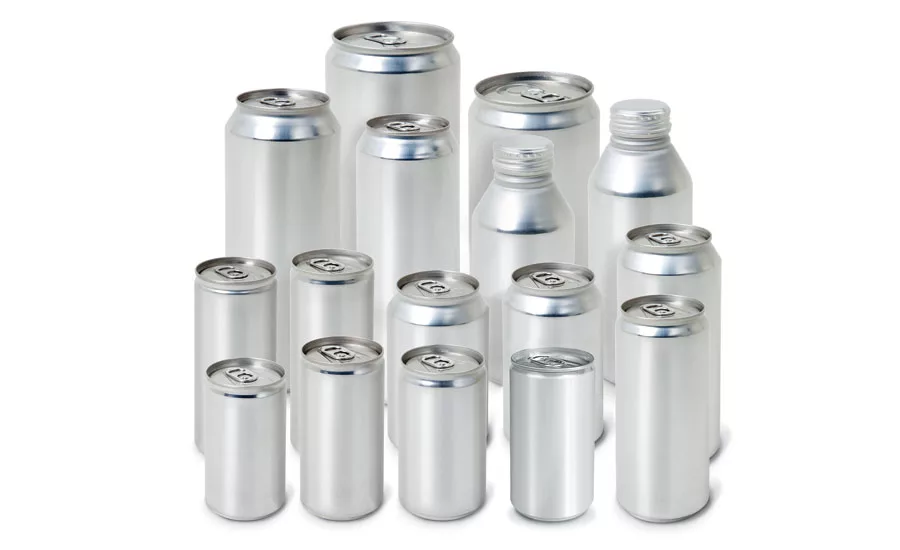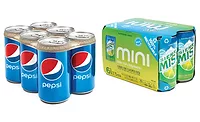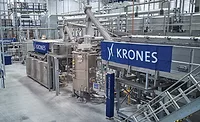Design, recyclability key for primary packaging materials
Taxes, consumer demand contribute to proliferation of smaller pack sizes

In the competitive consumer packaged goods market, consumers’ first engagement with a product typically is when viewing it on the shelf. First impressions and drawing consumers in through vibrant packaging, eco-friendly shapes, smaller pack sizes and tactile experiences are galvanizing the beverage market.
The Cleveland-based Freedonia Group notes that U.S. demand for protective packaging is projected to increase 4.9 percent a year to $7.8 billion in 2021, driven primarily by continued growth in retail eCommerce, it states.
In its 2017 “Packaging Research” report, Chicago-based Euromonitor International notes that the consumer packaging industry experienced 1.9 percent growth in 2016, bringing global retail demand for consumer packaging to 3.4 trillion packs.
“Flexible plastic, PET bottles and glass bottles are the pack types most sold. Together these three pack types dominate, accounting for 52 percent of all sales in 2016,” says Euromonitor’s Head of Packaging Research Rosemarie Downey. “… Soft drinks had the strongest performance when it comes to global packaging growth as its demand rose by 3.2 percent in 2016.”
How a beverage is packaged and deciding the type of packaging material is a critical part of the equation for beverage-makers, says John Cullen, director of sales and marketing for PET Resins at DAK Americas, Charlotte, N.C.
“PET’s transparency and bright, glossy surface have made it the preferred plastic packaging material because it helps sell the product,” he says. “PET also has the advantage of being a sustainable option for marketers. When properly recycled, PET can be used many times to make new beverage containers or other products targeted for the consumer (carpeting, for example).”
Small-volume packaging resonates
As consumers look for smaller-volume packaging to address healthy lifestyle choices, the PET packaging industry continues to innovate.
“The smaller volume allows the consumer to enjoy their selection of beverages while maintaining their calorie balance,” Cullen explains “The challenge for the PET packaging industry is to deliver extended shelf-life in smaller packages. This challenge is being met with new materials and processes that meet the brand and bottler expectations.”
Plastic is the most popular packaging type in the beverage industry, owing the majority of its volume size and growth to carbonated soft drinks (CSDs) and still water, according to industry experts at Imola, Italy-based SCAMI. “Today more than 70 percent of global soft drinks are sold in PET bottles,” SCAMI’s expert states. “… Consumers are buying smaller quantities of products and more value-added drinks, such as juices, isotonics and vitamin drinks. Therefore, beverage producers have to adapt to these trends, offering a range of PET products that come in small sizes and that are able to preserve high value-added products.”
The war on sugar and regional added sweetener taxes also has led to a shift to smaller volume can sizes, notes Megan Easterling, marketing manager at Broomfield, Colo.-based Ball Corp. “With a reduction in fluid ounces, brands are able to provide a lower-calorie and lower-sugar content beverage without altering formulation,” she explains.
Enhancing the experience
In addition to protecting the liquid inside, primary containers also can play a vital role in the consumption experience. Beverages in aluminum cans contribute to the overall drink experience, says Sherrie Rosenblatt, vice president of marketing and communications at the Can Manufacturers Institute, Washington, D.C.
“From the minute a consumer experiences the 360-degree brand graphics, they receive visual cues that drive appeal and expectations. Next is the touch of the chilled can, which denotes the evolution of a colder, more refreshing, smooth-drinking experience,” Rosenblatt says. “Moments later is the crackling sound and aroma that happens from opening the can, which marks the start of a nourishing experience.
“And, beverage cans are 100 percent recyclable, forever, which means that a can may be recycled into a new can over and over again. In fact, aluminum beverage cans are the most recycled drinks package in the world,” she adds.
However, aluminum cans are not the only primary package impacting consumers’ perceptions. As premiumization grows, especially in wine and spirits, glass remains the go-to material for establishing a premium consumer experience, says Lynn Bragg, president of the Glass Packaging Institute, Arlington, Va.
Because the human eye is wired to look for color/value and shape followed by texture and feel, the inert and transparent qualities of glass naturally helps brands tell a story, she adds.
“Glass is pure,” Bragg says. “Brands that are making organic, clean label and other ‘functional’ beverages, a growing market category, want a package to match. Glass is non-reactive and safe to use over and over again. It also acts as a natural barrier — it’s virtually impermeable to oxygen, so glass helps keep foods and beverages fresh and full of their natural vitamins, minerals and other health benefits.
“… The glass container industry is exploring texture applied strategically to create an experience that naturally attracts consumers to a product,” she continues. “For example, embossing and patterns that are reflected in nature are ideal to create an organic, natural feel and look.”
Protecting the planet
Consumers who care about recycling and environmental issues and population demographics, which are expected to increase to an additional 1.3 billion consumers by 2025, are influencing the beverage industry in numerous ways, according to SACMI experts.
“First, as the population is progressively growing, we are seeing a huge increase in bottled beverages worldwide. For us, this means a growth in market demand for equipment machines and for substitution of the obsolete ones,” the expert explains. “The inclination to buy bottled products derives also from the need of consumers (especially in high industrialized countries) to buy a packaged product, which is seen as clean and not polluted.
“The world population is also aging, which translates into a bigger customer base of people over [their] 60s that feeds the market demand for healthy waters and vitamin drinks,” the expert continues.
Yet, concerns about plastic waste and marine pollution have skyrocketed, especially since China announced last year that it will impose a ban on imports of foreign waste, states a Jan. 31 blog post titled “The Plastic’s World Crisis” by Maria Coronado Robles, senior analyst at Euromonitor.
“This has inspired the EU to launch a new plastic strategy focused on two key goals, making all packaging recyclable, reusable or compostable by 2030 and achieving higher packaging recycling rates across Europe. This brings huge opportunities and challenges for both plastic manufacturers and the recycling industry,” she writes.
Beverage companies, retailers and packaging manufacturers also are announcing recycling-related goals. At the World Economic Forum in Davos, the Ellen MacArthur Foundation announced that 11 companies, including PepsiCo, The Coca-Cola Co., Unilever and Walmart, are working toward 100 percent reusable, recyclable or compostable packaging by 2025 or earlier. The 11 companies represent more than 6 million tons of plastic packaging a year, it adds.
Recycling packaging materials also makes good business sense as containers produced with recycled material use 95 percent less energy compared with bottles made from raw materials, says Eric Louis-Seize, market analyst at Hawkesbury, Ontario-based Montebello Packaging.
“Aluminum is around 15 times lighter than traditional glass, which increases shipping efficiency,” he says. “According to the Aluminum Association, the value of recycling aluminum today is $1,367/ ton. Compared to plastic [at] $310/ton and $0/ton for glass. This means aluminum cans essentially subsidize the recycling of lower value materials — making municipal recycling programs possible.”
Ball Corp.’s Easterling also notes the inherent sustainability factors in aluminum cans. For example, a recycled aluminum can is able to be returned to shelf as another can in as few as 60 days, she notes.
“Sustainability is part of the conversation with our customers every single day,” she says “You’ve probably heard the saying ‘recycling, brought to you by aluminum’ and we are proud of that badge. Metal drives the packaging recycling stream, metal is where the vast majority of the value is.”
Lightweighting is a key goal of the company, with the average aluminum beverage can weighing 40 percent less than it did in the 1970s. “By 2020, we are striving to cut the carbon footprint of our beverage cans by 25 percent,” Easterling adds.
When it comes to plastic bottles, beverage manufacturers are requesting plastic resins that have recycled content and that easily can be recycled, DAK Americas’ Cullen says.
“Basic materials that are also sustainable and made from renewable sources are also in demand,” he says. “There is significant work being done by the PET industry to address all of these wants. The challenge is balancing the benefits with the cost of the new technologies.
“… PET gives consumers a window into the contents of the package,” he continues. “The glossy surface conveys quality and gives a glass-like appearance without the weight and breakage associated with that material. PET continues to see volume growth in beverage applications and one good example of a major new development is the conversion of Snapple to PET from its traditional glass.”
When it comes to bottled water purchased globally, the 500-ml PET bottle remains the most common package sold, Euromonitor’s report states. Development also is under way in sub-500-ml sizes for on-the-go hydration that also is parent-friendly, it adds.
Regardless of the container type, consumers want a quality product packaged in a premium container that is visually appealing, Montebello Packaging’s Louis-Seize says. Ensuring the sustainability of the packaging also is crucial.
“As companies embrace circular economy principles, designing packaging with the overall environmental impact in mind is critical to brand loyalty,” he says. “Recent beverage industry trends have placed package design and labeling into the spotlight since consumers are attracted to visually appealing package design with easy-to-read labels that align with their health and sustainability interests in both alcoholic and non-alcoholic drinks.” BI
Looking for a reprint of this article?
From high-res PDFs to custom plaques, order your copy today!





